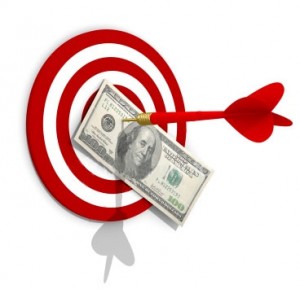Pricing. A precious subject. Difficult. But essential. In the end, all a company does is 3 things: (1) drive frequency (through equity building, creating desirability and through availability), (2) drive volume per usage/consumption (through great product performance; i.e. delivering on the brand promise), and (3) manage pricing. The combination of these 3 give you the revenue of your business.
Pricing is the one strategy that moves the least as a strategy (by strategy here I mean ‘system’, ‘theory’). If it moves at all. And that in itself is strange; knowing that it is the most impactful element in a company’s revenue delivery. Companies are built on certain pricing strategies (sometimes through unwritten rules that ‘have been around’ for 100 years), and it is difficult to let go or change over. And, it is the CFO’s baby. But it actually should be the marketer’s baby …
Why pricing should matter (more) to marketers
Price of a product or service is an important signal sent to the consumer. It is and rightly should be a supporting lever to the equity of the brand. It is a signal that labels whether your product is cheap …affordable …expensive …exclusive …for you …not for you …for everyday …for special occasions …etc. Consumers’ psychology is such that price comes with a lot of baggage based on previous experience with your product, or potentially previous experience with a competitive product. It is immediately put in the wider competitive set, and, relayed back to money available in the wallet (our on the visa) at the time of purchase. All of this makes price setting a complicated matter.
Question is: do you really spend the time thinking about all these (equity and brand) aspects when you determine the price of your product?
Current practice
At the risk of generalizing dramatically, I’d say that for a lot of companies, pricing is a p&l exercise, internally focused, based on a cost+ method (input being the cost of the product and package plus the cost of the go-to-market in all its aspects). In most cases, it is an exercise whereby one is trying to match a competitor’s price -great, at least an external factor is added. That system is comfortable, predictable, gets you what you’ve always gotten. Hooray, the CFO will be happy. BUT…it is not at all consumer based! <That doesn’t mean it’s bad; it’s just not enough> If Porsche would follow a cost+ model then we’d probably all drive a Porsche for less than 15.000 dollars. Or we’d all be wearing UGC boots for 100 bucks, or drinking a Starbucks coffee for a few $cents only. Get my drift!? Pricing is much more of a strategic equity weapon than we might think.
Future of pricing?
Time for a change I’d say. Why? Well, the cost+competitive price strategy leaves opportunities on the table. Because it doesn’t start from the consumer ‘willingness’ to pay a certain amount for what he gets, you either under-price or over-price your product. Consumer might get the wrong ‘signal’ about your brand, and price might determine buying or not buying (in the ideal world it is “this product/brand is perfect for me” that should determine buying or not buying). Not good. So the question is: How can you start from the ‘worth of a proposition’ rather than cost+? How can you use price as an ‘equity signal’? How can you generate more profit by pricing higher to invest in A&M/image/identity (that by the way in turn leads to desirability and premiumness)? How do you really leverage the power of your brand more?
All of these questions warrant a change to what is called VALUE-BASED-PRICING. [definition: VBP sets prices on the value – perceived or estimated – to the consumer rather than on the cost of the product or historical prices]. The benefit I think is big: as a company you can move from the just-right-price quest (which is always a struggle) to a maximum-possible-price-for-a-proposition, which will boost profits! VBP is all around us, outside FMCG. Why can’t it be working in FMCG for instance?
Caveat
Value-based-pricing is much more complex than any other pricing strategy. You need to understand consumer price psychology before you can make a call. And that leads to a need to change systems that lead to pricing decisions dramatically. From how you research pricing [you need to reframe ‘willingness to pay’], to how you develop VBP-modeling-tools to manage the portfolio. Understanding elasticity, in all its shapes and forms is essential. Stretching prices is possible, but there obviously are limits too. Uncovering those is critical (circling back to the opening sentence of this article: price is one of the 3 key components to a business… that means that if you get it wrong, you suffer!)
FYI – two years ago I wrote an rather controversial view on pricing, based on my theory I call “distance to the bin” …how risky is it for consumers to “bin” your product/brand, and how does that influence price setting. Read it here.
Any other views on the subject? I’d love to hear them!









{ 3 comments… read them below or add one }
Good one KF,
Would like to build and add on a few things,
As a brand is a relationship between the consumer and the consumable, pricing is the cost that defines that relationship. I.e. Cost of the relationship.
Sometimes cost plus, benchmarking competitor on price starts to slowly erode the relationship, when there are price increases and eventual, singals a seperation between the two. I.e. Directly impacts the brand equity. The biggest fundamental problem in my view is looking at margins vs. Actual profits when defining or comparing past present and future PnL’s.
Sometimes when there is a price increase in the industru there is an opportunity to strenghten the relationship by wowing the consumer and not following it. Sometimes there is a requirement to increase (mostly in other industries).
You cannot ignore the role of retail in this situation. They have tried to convince the consumer that your relationship with the brand is comming at your cost and not at the product. Therefore by giving discounts, negotiation price and +free promotions they are trying to shake or set a new benchmark to the relationship.
So while working out prcing one needs to also consider the current dynamics of the channels and its impact on the shopper. With the evolution of retail and proliferation and further segmentation of channels to consumer, it has become even more challeging to ensure a win win pricing strategy.
Great additional thoughts! Thanks.
Check out http://www.millwardbrown.com/Libraries/Optimor_BrandZ_Files/2011_Value-D_SummaryReport.sflb.ashx